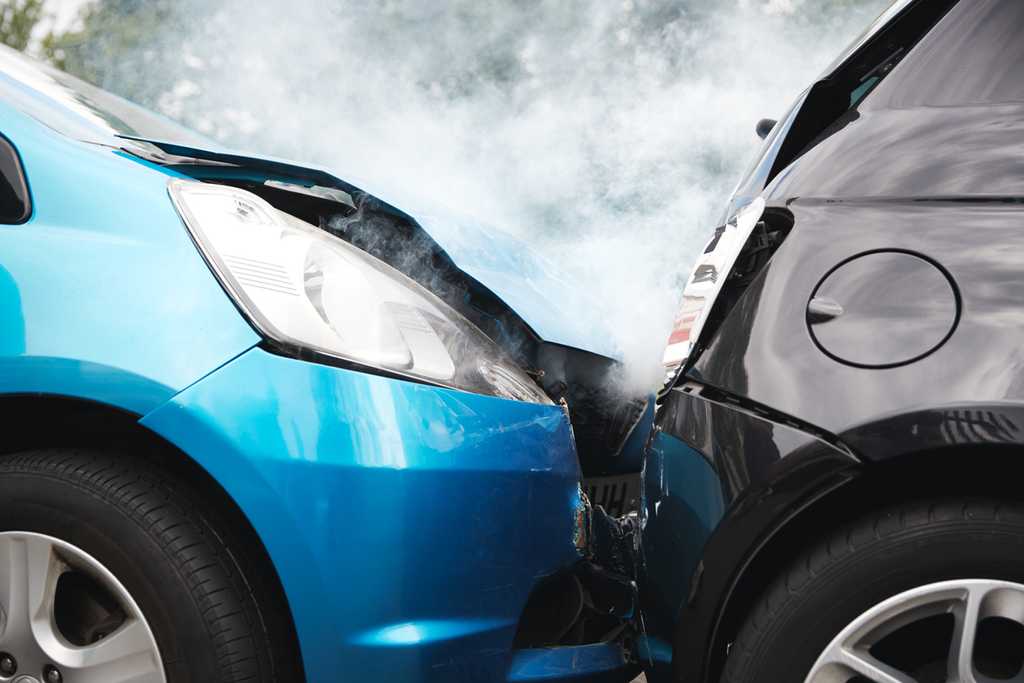Collision insurance is an optional coverage on your auto insurance policy. It applies in various situations, including if you’re responsible for an accident and your vehicle is damaged. Your policy’s collision coverage ensures your insurance company will help pay for your car’s repair or replacement costs. The coverage requires you to pay a deductible, which is your share of those costs.
Your auto insurance policy may consist of multiple coverages, with each being applicable in specific circumstances. At your policy’s core is your liability coverage, which is required by law in nearly every state.
Beyond liability, you can add various coverages based on your needs. One that you might consider is collision. Collision coverage is not mandatory under the law, but it may be required by your bank if you loan or lease your car.
What collision insurance covers, and how it works
Collision coverage comes into play if your car is involved in any of the following:
- A collision with another vehicle in which you’re determined to be at fault
- A collision with a stationary object, such as a guard rail, utility pole, or tree
- A single-vehicle accident in which your car rolls over
- A collision in which an uninsured driver is at fault for hitting your car, and you don’t have uninsured motorist coverage
In these situations, your collision coverage ensures the insurance company will help pay to repair or replace your vehicle. This payment is subject to a deductible — an amount of money that you choose when you buy your policy, representing your share of the repair costs.
Your collision insurance in action: an example
Here’s an example to show how collision coverage works.
Say your car insurance policy includes collision coverage with a $500 deductible. While driving home from work, you lose focus for a moment and collide with the back of another car that’s stopped at an intersection.
Fortunately, no one is hurt, but the accident has damaged both your and the other driver’s car. A police officer cites you in the accident, and you and the other driver both file claims with your insurance company.
A representative from your insurance company asks you to get a repair estimate from an auto body shop for your car’s damage; that estimate totals $4,000. The insurer then sends you a check for $3,500 for the repairs. This leaves you responsible for the remaining $500, which is the amount of your deductible.
(Your liability coverage, meanwhile, ensures your insurance company pays to repair the damage to the other driver’s car.)
Actual cash value and total losses
Your collision coverage has a limit — the maximum amount the insurer will pay. Unlike your liability limit, which is stated clearly on your policy’s declarations page, your collision limit is based on what’s called the “actual cash value” of your car at the time of the claim.
Think of actual cash value as the depreciated value of your car — not what it was worth when it was new, but what it’s worth now, with all the years and miles on it. Unfortunately, there’s no simple and straightforward way to calculate actual cash value. You can get a general idea, however, by using the valuation tools at the websites for Kelley Blue Book and NADA.
So, if the cost to repair your car matches or exceeds its actual cash value (as determined by the insurance company), then the insurer will likely declare it a total loss. Your insurance payout will thus be equal to the car’s actual cash value. And that likely will not be enough to replace your car with a newer one.
The replacement cost option
If the idea of only getting the actual cash value in a total loss situation doesn’t suit you, check with insurers that offer a replacement cost option.
Replacement cost is generally available only for newer cars (less than two years old). This option will base the collision coverage limit on the cost to buy a brand new car of the same or similar make and model. Your total loss payout will still be subject to your deductible, but you’ll be much more financially able to walk into a dealership and replace your damaged car with a new one.
Collision vs. comprehensive insurance: what’s the difference?
As stated earlier, your policy consists of multiple coverages, each applying to a specific situation. Whereas collision generally applies to your moving vehicle, comprehensive — another optional coverage — applies to situations in which the vehicle is parked.
Your comprehensive coverage thus applies if your vehicle is damaged by a hailstorm, a flood, or other weather event. It comes into play if your vehicle is crushed by a falling tree. It ensures you’re reimbursed if your vehicle is stolen and not recovered.
As with collision coverage, there’s a deductible, and the coverage limit is based on actual cash value (unless your vehicle is eligible for, and you choose to pay extra for, a replacement cost option).
Collision and comprehensive are frequently spoken of together, which sometimes can cause confusion. It’s best to think of them as complementary, but separate, coverages on a policy.
How collision insurance deductibles work
As stated above, you get to choose the collision deductible when you purchase your policy. The insurance company will give you options: $250, $500, and $1,000 are common. The lower your deductible, the more you pay in premium, but the less you have to pay if you file a collision claim.
Remember that the deductible is your share of the amount of money needed to repair your car. So if your repair is likely to cost less than the deductible, it’s not going to be worth filing a collision claim.
Your insurer may also give you an option for a collision deductible waiver. A waiver comes into play if you’re in an accident with an uninsured motorist, and that driver is at fault. You may need to use your collision coverage to pay for your repairs, but having the waiver means you’ll avoid paying the deductible.
What does collision insurance cost?
According to a recent report by the National Association of Insurance Commissioners, the national average cost of collision coverage in 2018 was $377.62. For reference, the average cost of liability coverage, which is mandatory in most states, was $644.11.
What you pay for collision coverage will vary, of course, based on a wide range of factors. The most common include your vehicle’s year, make, and model; where you live; your age; and the number of miles you drive.
Remember also that you can manage the cost of this coverage with your deductible selection. If a higher deductible (say, $1,000) will work for you, you can choose it when you buy your policy to save a little money in premium.
Deciding if you even need collision insurance
Considering the relatively high cost of collision coverage, and the fact that it’s not required by law, you may consider removing it from your policy. Here are a few things to consider.
If you’ve financed or leased your car, your bank may require you to carry collision coverage (along with comprehensive coverage) on your policy. So you’ll need to pay off your loan or lease before you can drop the coverage.
One rule of thumb is to remove collision coverage when your annual premium equals 10% of your car’s value. So if you’re paying $380 per year for collision, and your car is valued at $3,500, you may want to consider dropping the coverage. The thinking here is that the amount you’re paying in additional insurance premium is out of proportion to the level of risk you have.
Another line of thought suggests removing collision when the vehicle is 5 years old, or has 100,000 miles on it. You may want to think twice, however, if your car has expensive repair parts (such as headlights or sensor modules on a luxury car).
You can also consider removing collision coverage if you rarely drive the car, or if you have cash set aside to fix or replace the vehicle.
An insurance agent can help
Before making any decisions about your car insurance policy, it’s a good idea to talk to an insurance agent. Agents are licensed by the state, and trained in the products they sell. They can match you with a policy that meets your needs, and advise you on what coverages you should and shouldn’t have.

